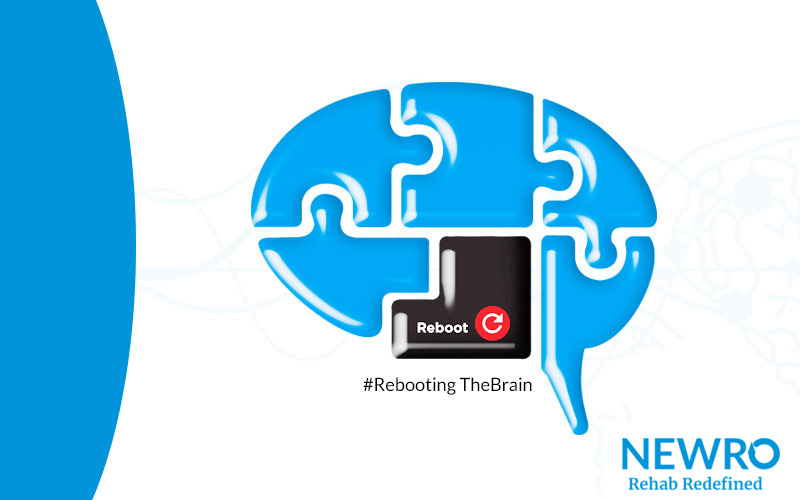HAND & UPPER EXTREMITY STROKE REHABILITATION
In the complex process of neurorehabilitation, upper limb & hand rehabilitation refers to the process of retraining and potentiating the neuronal pathways involved in effective and purposive use of both the hands in daily life for numerous tasks important for the individual. These axons of these upper motor neurons extend from the cortex through the midbrain to the brainstem. They traveling down to the spine and end at the AHC of the spinal cord. Thereafter, the Lower Motor neuron starts and travels out from the spinal canal and ends at the neuromuscular junction where it stimulated a motor unit or inhibits the action of a motor unit i.e. muscles.
All along the neuraxis, physical, chemical or degenerative injury may happen affecting the function of the upper limb. The extent of impairment/ disability depends on the site, type and severity of injury. The primary goal of upper limb rehabilitation is to identify the cause of the impairment and provide customized, task specific therapy based on the rehabilitation potential of the patient. This therapy approach uses purposeful and productive activities as the basis of rehabilitation.
How is adult rehabilitation different from pediatric rehabilitation?
There is one basic difference between adult and pediatric rehabilitation. Neurorehabilitation for adults is based on ‘retraining’ of the lost function. The word ‘Retraining’ is used to emphasize the presence of previous motor learning which an individual acquires through his lifetime. In pediatric rehabilitation, it is not necessary that the child will have any previous motor memories; hence the word ‘training’ is used to describe the rehabilitation process.
What are the challenges faced by the rehabilitation team at different levels of recovery?
With the rapid growth of the population, industrialization, a fast-paced life but with poor and unhealthy lifestyles, the number of TBIs, strokes, dementia and the like are increasing exponentially. Also, in countries like India and others in the developing world, a dramatic improvement in the quality and delivery of acute care services (albeit unequally across the country) and it’s access and affordability, has resulted in an large increase in the number of such individuals who are surviving the acute care, but with significant disabilities. Thus, the need and access to a well-structured, early and comprehensive rehabilitation is being felt very acutely. However, the struggle to deliver these complex acute care services and ‘saving lives’ is consuming most of the healthcare industry’s time that they just don’t have the additional time, inclination, energy or bandwidth to set up and deliver these rehabilitation services to those who survived but remained disabled. The obscene amounts of money being spent (by the government, public, and family members) on just maintaining such disabled patients are actually unfathomable.
Each patient who presents with a brain trauma either ischemic or hemorrhagic in nature presents with a complex mix of complaints. Neurorehabilitation related to the recovery of the upper limb varies from one individual to another. This difference may be attributed to the duration since the injury, emergency care received or time at which the patient received the medical care the first time after the damage occurred, extent or site of injury and associated comorbidities.
This process of recovery, though seems to be a disorganized puzzle, at first sight, can be grossly divided into states of recovery which may overlap one another. This process has to be a coma to community rehabilitation as it is proven that neurorehabilitation needs to be employed as early as day 2 of trauma and should continue until the patient is 100 percent reintegrated in the society.
0 +
0 +
0 +
The most commonly followed sequence of recovery for the upper limb is as follows:
CAREPaRe & NewRo Logix™
During rehabilitation for these patients it becomes critical to identify the primary cause of the problem. Is the problem due to sensory deficit, is it due to motor control deficit, is it due to cognitive-perceptual deficit, is it due to circuit related issues?
An integrated system which can identify the problem using the information gathered through the pattern of the movement, sensory feedback from the hand, how the action has been planned at the cognitive level and how the motor output is implemented can help to train the patient for achieving maximal functionality in daily life.
Another problem in this process is due to the specificity of each and every task which is stored in the brain as schemas. For the problem in each task which is reported by the patient, task-specific training has to be carried out. This process of learning works better if it is error-free in nature. A device which can monitor and record how the hand is being used for daily life can be used as feedback for checking and correcting the maladaptations in absence of the therapist.
This is where the CAREPaRe model of neurorehabilitation with analytical software ‘NewRo Logix™’ is ideally suited to design ‘customized’ rehab programs for ‘hand rehabilitation’.
